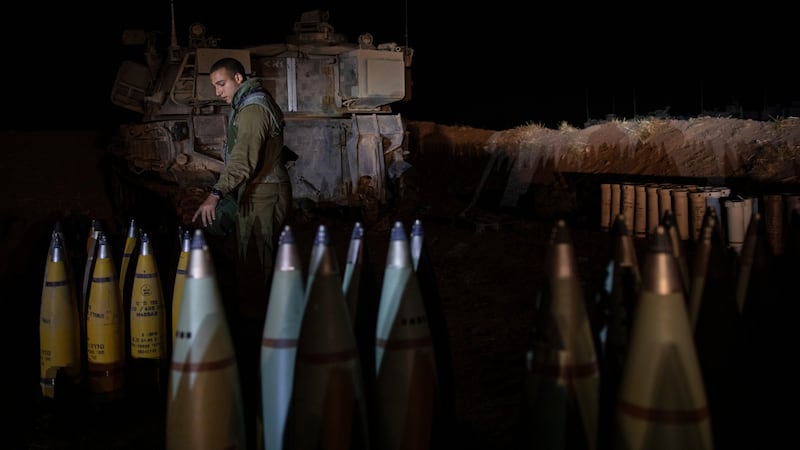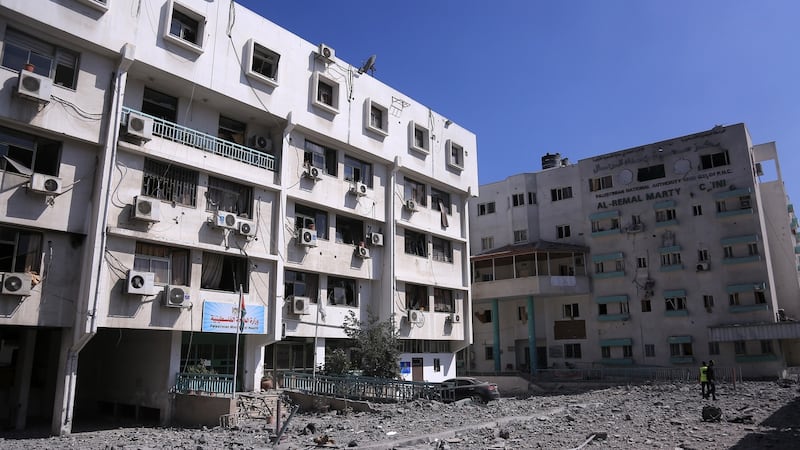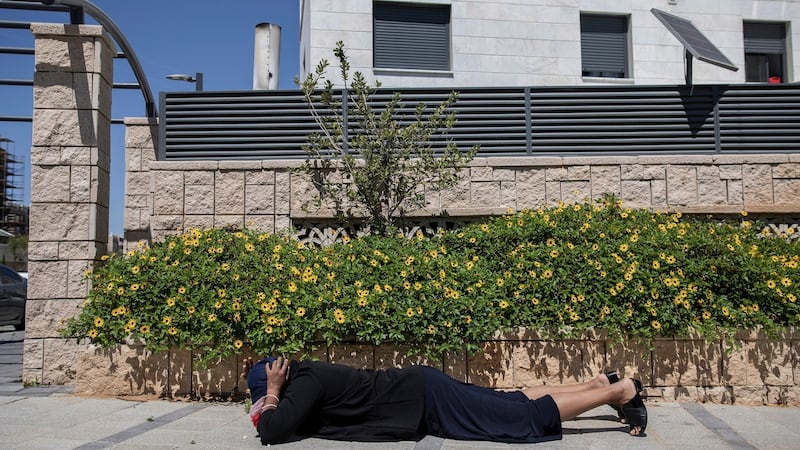The nine-day battle between Hamas militants and the Israeli military has damaged 17 hospitals and clinics in the Gaza Strip, wrecked its only coronavirus test laboratory, sent fetid wastewater into its streets and broken water pipes serving at least 800,000 people, setting off a humanitarian crisis that is touching nearly every civilian in the crowded enclave of about two million people.
Sewage systems inside Gaza have been destroyed. A desalination plant that helped provide fresh water to 250,000 people in the territory is offline. Dozens of schools have been damaged or closed, forcing some 600,000 students to miss classes. Some 72,000 Gazans have been forced to flee their homes. And at least 213 Palestinians have been killed, including dozens of children.
The level of destruction and loss of life in Gaza has underlined the humanitarian challenge in the enclave, already suffering under the weight of an indefinite blockade by Israel and Egypt even before the latest conflict.
Rocket fire from Palestinian militants has also harmed Israeli infrastructure, damaging a gas pipeline and pausing operations at a gas rig and at two major Israeli airports. But the damage was incomparable to that in Gaza.

Until Monday evening, Al Rimal health clinic in central Gaza City housed Gaza's only coronavirus test laboratory. Doctors and nurses there administered hundreds of vaccinations, prescriptions and screenings a day to more than 3,000 patients.
But on Monday night an Israeli air strike hit the street outside, sending shrapnel into the clinic, shattering windows, shredding doors, furniture and computers, caking rooms in debris and wrecking the virus lab. Vaccinations were cancelled and doctors’ appointments were postponed. The pharmacy was shut, and medicine deliveries paused.
More than 1,000 Gazans have been wounded in the Israeli offensive, so the damage to hospitals and clinics was especially dangerous.
"During times of war people need more treatment than usual," Mohammed Abu Samaan, a senior administrator at the clinic, said on Tuesday. "Now we can't give people medicine."
Controls
The humanitarian situation in Gaza was already dire before the war. Unemployment hovered around 50 per cent. The Israeli and Egyptian governments control what comes in and out of the strip, as well as most of its electricity and fuel.

Israel also controls Gaza’s birth registry, air space, maritime access and cellular data, and restricts Palestinian access to farmland beside the strip’s perimeter.
A spokesman for the Israeli army, Lt Col Jonathan Conricus, did not deny Israel's air strikes had caused damage to civilian infrastructure, but he said Israeli military leaders did their best to avoid it.
“Obviously, yes, healthcare facilities, mosques, schools, water facilities and the like are all marked in our system as sensitive infrastructure that must not be targeted and affected by our fire,” he said. “Obviously we take precautions.”
The high civilian death toll and damage to civilian infrastructure have raised questions about Israel’s adherence to the international laws of war, which bar the targeting of purely civilian sites and limit acceptable collateral damage to that which is proportionate to any military advantage.
But, said William Schabas, an international law professor and former chairman of a United Nations commission that investigated allegations of Israeli war crimes in Gaza in 2014, "Proportionality is a subjective notion."

Hamas fighters operate from an extensive network of tunnels under Gaza. As Israeli warplanes drop bombs aimed at destroying that network, it is the people caught between who suffer the most calamitous losses.
Hamas, which has fired more than 3,000 rockets at Israeli cities and towns, is clearly committing war crimes, legal experts say, though its weapons are far less effective and their toll far lower.
In southern Israel, schools within range of Hamas’s rocket fire have been closed and many families have left the border areas. The constant wailing of sirens warning of incoming rocket fire punctuate daily life in Israel, particularly in the south, sending Israelis repeatedly running to shelters.
Aid convoys
But the Hamas attacks also seem to be contributing to the humanitarian crisis within Gaza. On Tuesday, as a convoy of 24 trucks carrying much-needed international aid from Israel tried to enter Gaza they came under mortar fire from Palestinian militants, according to Israeli and UN officials.
Only five of the trucks got through the crossing before the rest were turned back. The trucks contained medical equipment, animal feed and fuel tanks for the use of international organisations in Gaza, Israeli officials said.

Since 2007, Hamas has engaged in three major conflicts with Israel and several smaller skirmishes. After each eruption of violence, Gaza’s infrastructure was left in a shambles.
The wars and the blockade, according to a report last year by the United Nations, have left Gaza with “the world’s highest unemployment rate” and more than half of its population living below the poverty line.
By Monday, Israeli bombs had destroyed 132 residential buildings and rendered 316 housing units uninhabitable, according to Gaza’s housing ministry. One air strike essentially destroyed the Hala al Shawa clinic in northern Gaza which also provides primary healthcare services and vaccinations, while another damaged four ambulances nearby, the health ministry said.
The blast from a third air strike broke windows in operating rooms, forcing the clinic to transfer surgery patients to other hospitals, said Abdelsalam Sabah, the ministry’s hospitals director. A separate air strike caused some structural damage to the nearby Indonesian hospital, he added.
A piece of shrapnel flew into the emergency room at the Gaza Eye Hospital, nearly wounding a nurse, he said.
The strike on Al Rimal clinic in Gaza City also damaged the administrative offices of the Hamas-run health ministry, said Dr Majdi Dhair, director of the ministry's preventive medicine department. One ministry employee was hospitalized and in serious condition after shrapnel struck him in the head, Dhair said in a phone interview on Tuesday.
“This attack was barbaric,” he said. “There’s no way to justify it.” – New York Times















